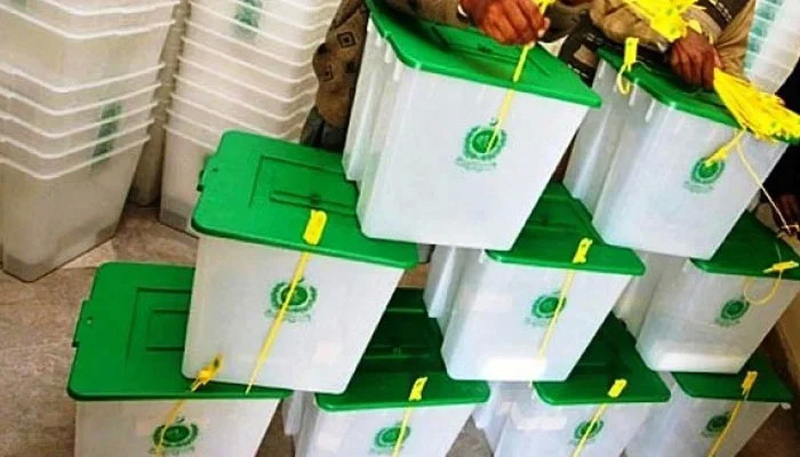 Like in other parts of the country, election activities have intensified in Sargodha division as February 8, the polling day, is approaching fast.
Like in other parts of the country, election activities have intensified in Sargodha division as February 8, the polling day, is approaching fast.
Almost every constituency has been decorated with colorful party flags and posters by the candidates, according to the code of conduct, issued by the Election Commission of Pakistan (ECP).
Social media is playing an important role in enabling candidates to reach out to their voters and provide them with a platform to connect easily.
Some area people told APP here on Friday, “Printing and selling of election-related items has picked momentum.” A citizen, Muhammad Ramzan, said: “Wholesalers and vendors appear to be overjoyed after getting orders for preparation of party posters.”
“As time passes and the general election draw near, political parties would heighten their political wars on the social media platforms,” said a youngster, while favouring a party and posting a picture of his favorite politician.
“In Sargodha, various corner meetings, political camps, and rallies have become routine,” said a politician while commenting on the election gala.
“Portraits and stickers of different political leaders could easily be noticed on rickshaws, wagons, Suzuki pickups, cars, and private buses,” said a student.
“The electioneering process has seen widespread use of social media, where enthusiastic youth and women are actively campaigning for their preferred candidates,” said another citizen in Sargodha city.
“This election will be unique due to increased number of young and female voters,” believes a politician.
In the Sargodha division, a total of 572,191 registered voters are set to cast their ballots on February 8 for the election of 11 National Assembly members and 23 provincial assembly representatives.
The electoral landscape is vibrant, with 647 candidates from diverse political parties and independents vying for the 11 National Assembly seats and 23 Punjab Assembly seats.
As per the Election Commission in NA-82 Sargodha I (12 candidates), NA-83 Sargodha II (14 candidates), NA-84 Sargodha III (28 candidates), NA-85 Sargodha IV (21 candidates), and NA-86 Sargodha V (16 candidates) are contesting.
In parallel, the Punjab Assembly seats will see active contests in PP-71 Sargodha I (16 candidates), PP-72 Sargodha II (13 candidates), PP-73 Sargodha III (12 candidates), PP-74 Sargodha IV (21 candidates), PP-75 Sargodha V (40 candidates), PP-76 Sargodha VI (31 candidates), PP-77 Sargodha VII (32 candidates), PP-78 Sargodha VIII (24 candidates), PP-79 Sargodha IX (23 candidates), and PP-80 Sargodha X (22 candidates).
In Khushab district, where 941,186 voters are registered, there are 12 candidates for NA-87 Khushab I and 14 candidates for NA-88 Khushab II in the National Assembly. Additionally, the Punjab Assembly races are heating up in PP-81 Khushab I (15 candidates), PP-82 Khushab II (28 candidates), PP-83 Khushab III (11 candidates), and PP-84 Khushab IV (15 candidates).
In Mianwali district, boasting a total of 1,068,522 registered voters, the National Assembly contests feature 17 candidates for NA-89 Mianwali I and 16 candidates for NA-90 Mianwali II. The Punjab Assembly battles unfold in PP-85 Mianwali I (15 candidates), PP-86 Mianwali II (22 candidates), PP-87 Mianwali III (22 candidates), and PP-88 Mianwali IV (16 candidates).
In Bhakkar district with a registered voter count of 1,042,684, NA-91 Bhakkar I and NA-92 Bhakkar II are contested by 14 candidates each in the National Assembly.
Simultaneously, the Punjab Assembly seats witness robust competition in PP-89 Bhakkar I (20 candidates), PP-90 Bhakkar II (17 candidates), PP-91 Bhakkar III (14 candidates), PP-92 Bhakkar IV (17 candidates), and PP-93 Bhakkar V (18 candidates).